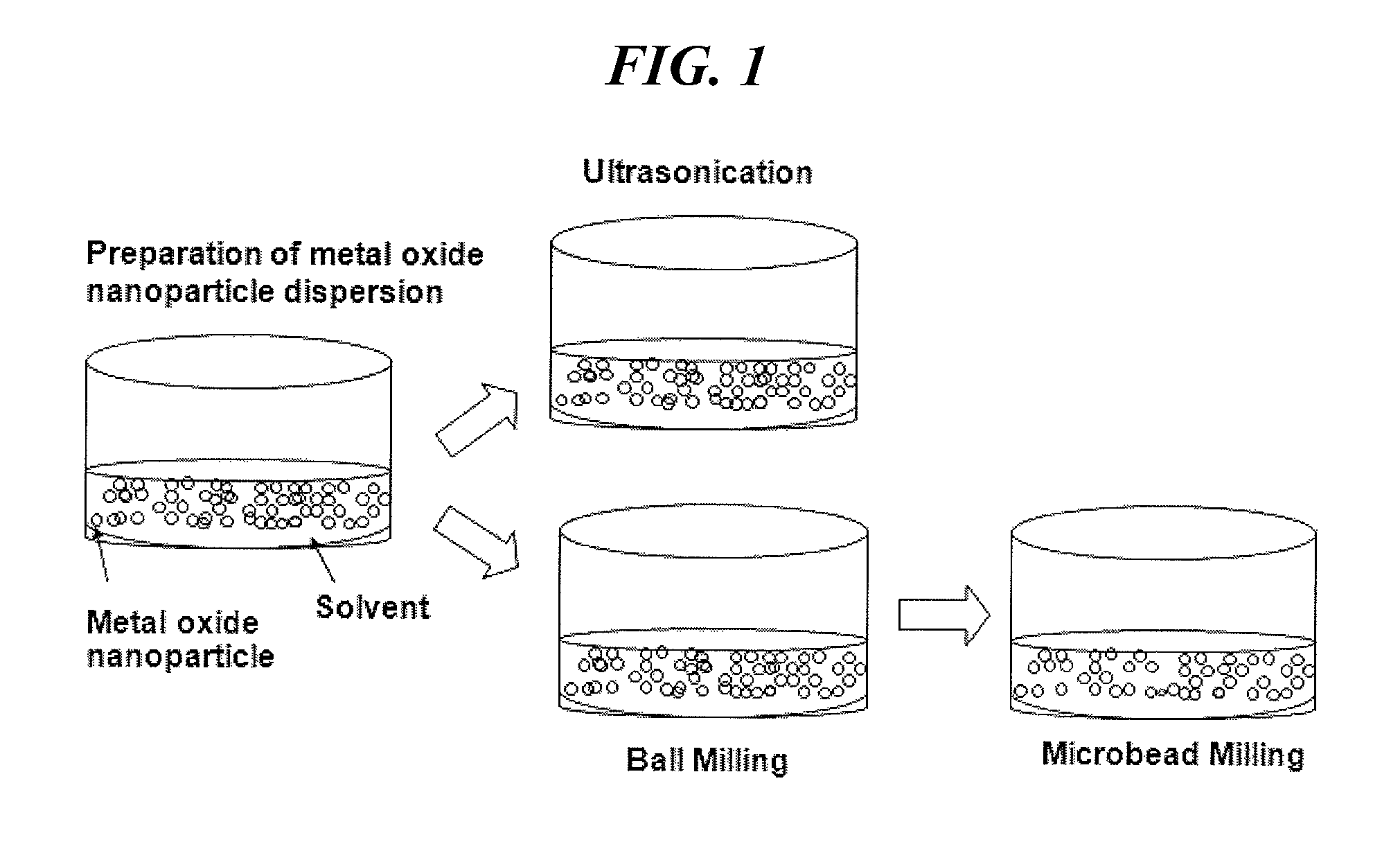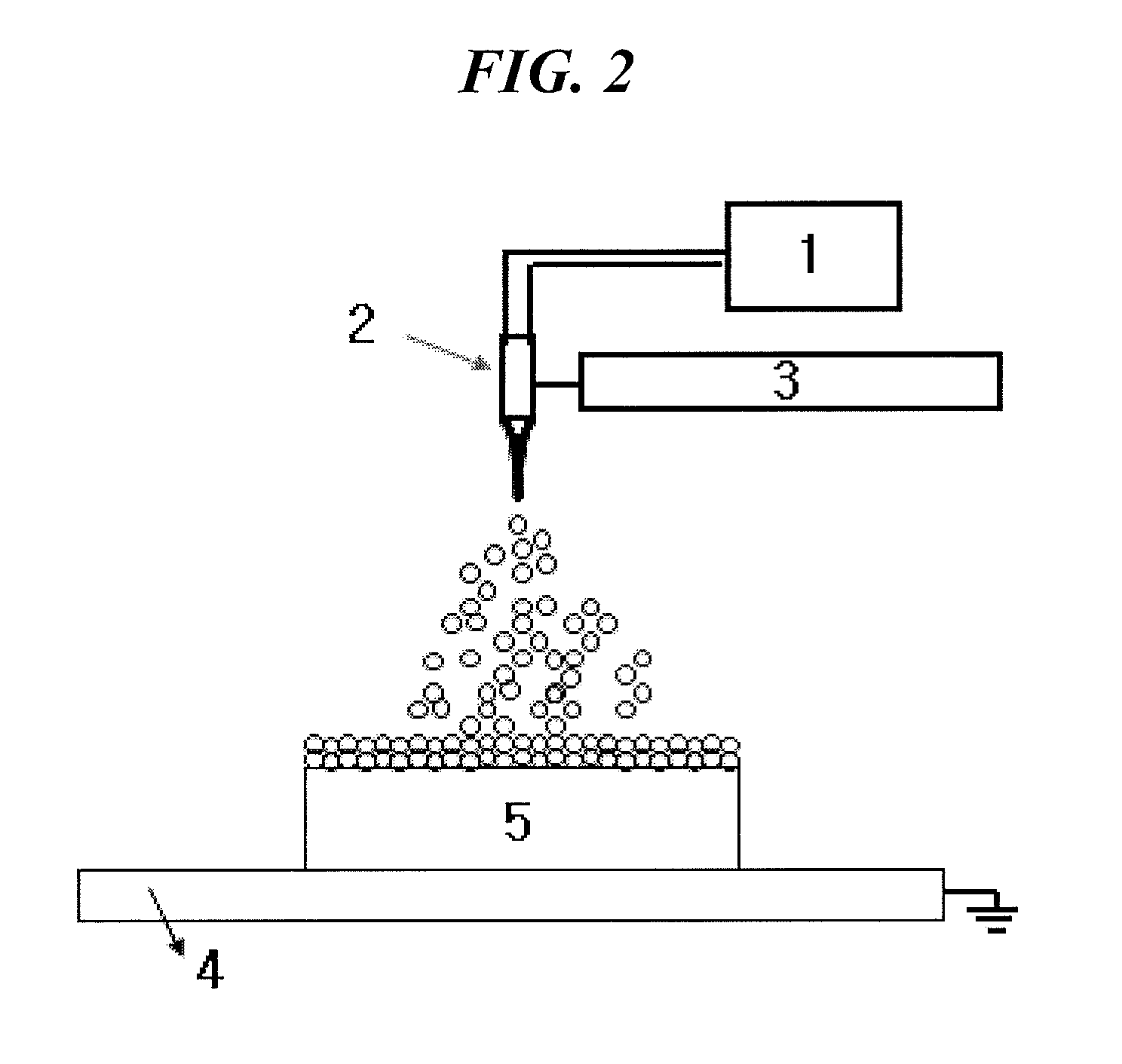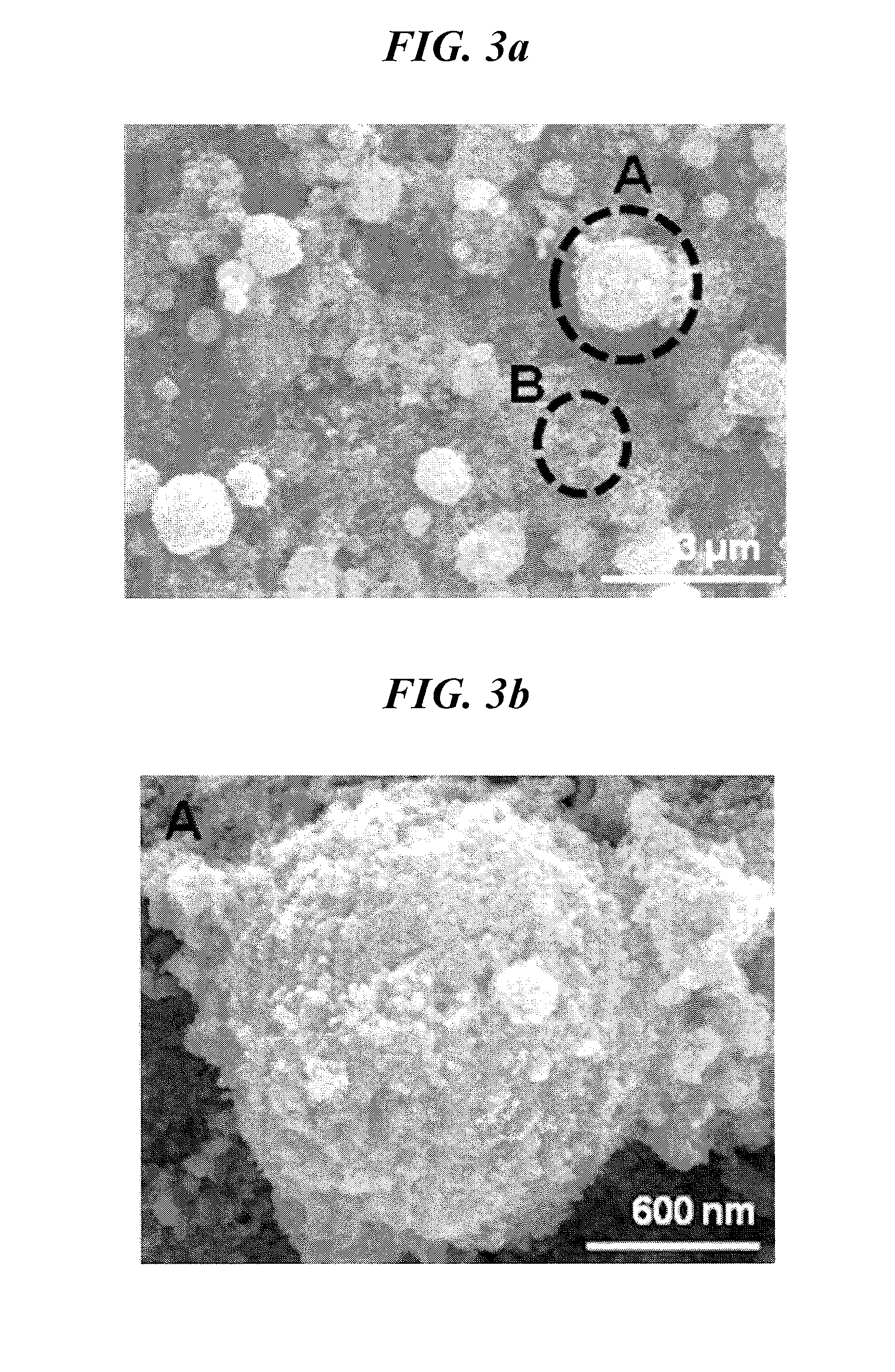Electrode for secondary battery, fabrication method thereof, and secondary battery comprising same
a secondary battery and electrode technology, applied in the direction of electrode manufacturing process, cell components, coatings, etc., can solve the problem of 30% discharge capacity decay after 10 cycles, difficult to maintain sustained battery cycle performance, and theoretical maximum capacity of only 372 mah/g, etc. problem, to achieve the effect of improving performance characteristics, high energy density and high speed charging/discharging capability
- Summary
- Abstract
- Description
- Claims
- Application Information
AI Technical Summary
Benefits of technology
Problems solved by technology
Method used
Image
Examples
example 3
PREPARATIVE EXAMPLE 3
Fabrication of an Electrode Comprising a Thin Layer of Iron Oxide Nanoparticles
[0078]An electrode comprising a thin layer of iron oxide (Fe2O3) nanoparticles was fabricated using the same procedure as described in Preparative Example 1 except using iron oxide nanoparticles (Aldrich Co., the average diameter of the nanoparticles: at most 100 nm).
[0079]A thin layer of iron oxide nanoparticles of the fabricated electrode was observed by SEM, and the results are shown in FIGS. 5a and 5b.
[0080]An SEM image of the thin layer of iron oxide nanoparticles obtained by electrospraying was shown inFIG. 5a.
[0081]FIG. 5a shows that the thin layer of iron oxide nanoparticles uniformly forms a thin layer disposed in the wide region of the collector. It comprises a region (region A) of an SEM image in FIG. 5a where nanoparticles clumped together to form agglomerates as well as a region (region B) where nanoparticles uniformly formed a thin layer without agglomerating.
[0082]FIG...
example 1
Fabrication of an Electrode Comprising a Thin Layer of Tin Oxide Nanoparticles
[0083]The thin layer of tin oxide nanoparticles prepared on the collector in Preparative Example 1 was post-heated at 500° C. to fabricate an electrode according to the present invention. Here, post-heating treatment was carried out in an air atmosphere for 30 minutes by using a box furnace.
[0084]A thin layer of tin oxide nanoparticles obtained in Example 1 was observed by SEM. The results are shown in FIGS. 6a and 6b.
[0085]FIG. 6a shows a crystalline growth of tin oxide nanoparticles after thermal treatment and the grown particle having the size of 300 nm to 2 nm. Further, a bond between particles becomes stronger, thereby being expected to have improved characteristics in terms of an electrical conduction. Especially, the internal resistance of a negative active material can be reduced thus to be expected to have high-output characteristics of a secondary battery anode. Further, the grown particles are ...
example 2
Fabrication of an Electrode Comprising a Thin Layer of Zinc Oxide Nanoparticles
[0087]The thin layer of zinc oxide nanoparticles prepared on a collector in Preparative Example 2 was post-heated at 500° C. to fabricate an electrode according to the present invention. Here, post-heating treatment was carried out in an air atmosphere for 30 minutes by using a box furnace.
[0088]A thin layer of zinc oxide nanoparticles obtained in Example 2 was observed by SEM. The result was shown in FIG. 7.
[0089]FIG. 7 shows a weak crystalline growth of zinc oxide after thermal treatment and a strong bond between particles, thereby being expected to have improved characteristics in terms of an electrical conduction. Especially, grown particles are also composed of fine nanoparticles, which cause a high specific surface area.
PUM
| Property | Measurement | Unit |
|---|---|---|
| diameter | aaaaa | aaaaa |
| temperature | aaaaa | aaaaa |
| diameter | aaaaa | aaaaa |
Abstract
Description
Claims
Application Information
 Login to View More
Login to View More - R&D
- Intellectual Property
- Life Sciences
- Materials
- Tech Scout
- Unparalleled Data Quality
- Higher Quality Content
- 60% Fewer Hallucinations
Browse by: Latest US Patents, China's latest patents, Technical Efficacy Thesaurus, Application Domain, Technology Topic, Popular Technical Reports.
© 2025 PatSnap. All rights reserved.Legal|Privacy policy|Modern Slavery Act Transparency Statement|Sitemap|About US| Contact US: help@patsnap.com



